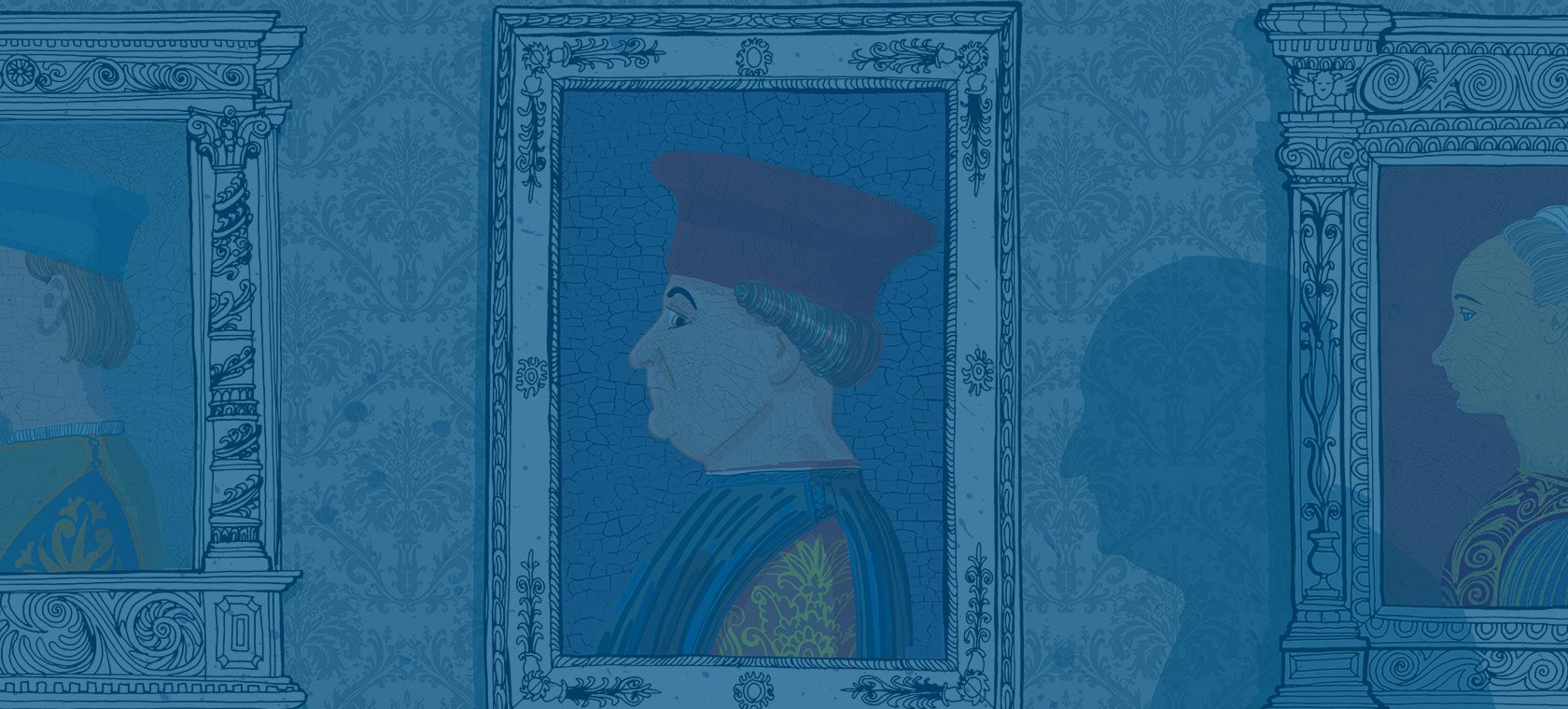
If you want to know what I looked like, visit the Pinacoteca of Brera Art Museum. There you’ll find my portrait painted by Bonifacio Bembo. It’s a profile, much in vogue at the time. My curly hair and prominent nose are ushers to an intuitively melancholy gaze.
I was a valiant leader of men in my day. My cohort of mercenaries served the cause of several Italian princes. I later lay down my arms at the court of the Viscontis in Milan, taking up the reins of duke and diplomat. Machiavelli always had a good word for me and for the Treaty of Lodi I largely helped to broker between Venice and Milan. Behind me were many battles, much bloodshed and suffering. Perhaps that explains why I wanted a hospital for Milan. The city had only a few small infirmaries. It needed a large building, a major work, to replace them all and provide free medical care to its poor.
It was I, Duke Francesco Sforza, who built Milan’s Major Hospital. It was 1456. It’s still my pride and joy. It was a major undertaking and the Milanese were much obliged. Even today they call it Ca’ Granda, Casa Grande. It instantly became a model for other hospitals. Yet, as time passed, a building designed for 288 patients could simply not keep pace with the growing population of Italy’s most industrialised city. By the late 1800s they moved my hospital to a building beyond the Naviglio canals.
And I followed it all, keeping watch as silently as I was invisible. It was a good show, even if I say so myself. No word has ever been uttered about the Duke’s ghost haunting it. Very discreet, thank you. So, I’ve seen my prodigy grow, expanding in wards and specialist care.
There’s one thing, though, that hasn’t been mentioned. Most people know all about my valour in arms and artful diplomacy. Few, however, speak about my passion for building and its techniques.
Even as the blueprints of the hospital took shape, I wanted only the best craftsmen and products involved. I must confess, too, that I always tried to influence the decisions of engineers and suppliers all through the following years, say, breathing on the neck of foremen, dropping a sheet of paper that reveals a cost estimate...little things, really. So, when Mapei started renovations in 1938, you might say I had a hand in it. It was a young company then, but I recognise quality when I see it. After all, I’ve got more than 500 years’ experience.
The façade needed new fireresistant skin. Silexcement was ideal for the job. The steps needed a decorative plastic coating. Quarzolite, invented by the company’s fabled founder Rodolfo Squinzi, was just the thing. And time has proved me right.
Since then Mapei has become an industry leader. And it still takes care of all the work my hospital needs despite the fact they now call it Niguarda. The other day Mr Giorgio Squinzi, who now heads Mapei, came to the Pinacoteca di Brera. He stopped in front of my portrait. I winked. He blinked. Wonder if he noticed.
* Mapei has been a supplier for major works undertaken at the Hospital since the end of World War II. The latest was the construction of the helipad for emergency air rescue completed in 2013.
